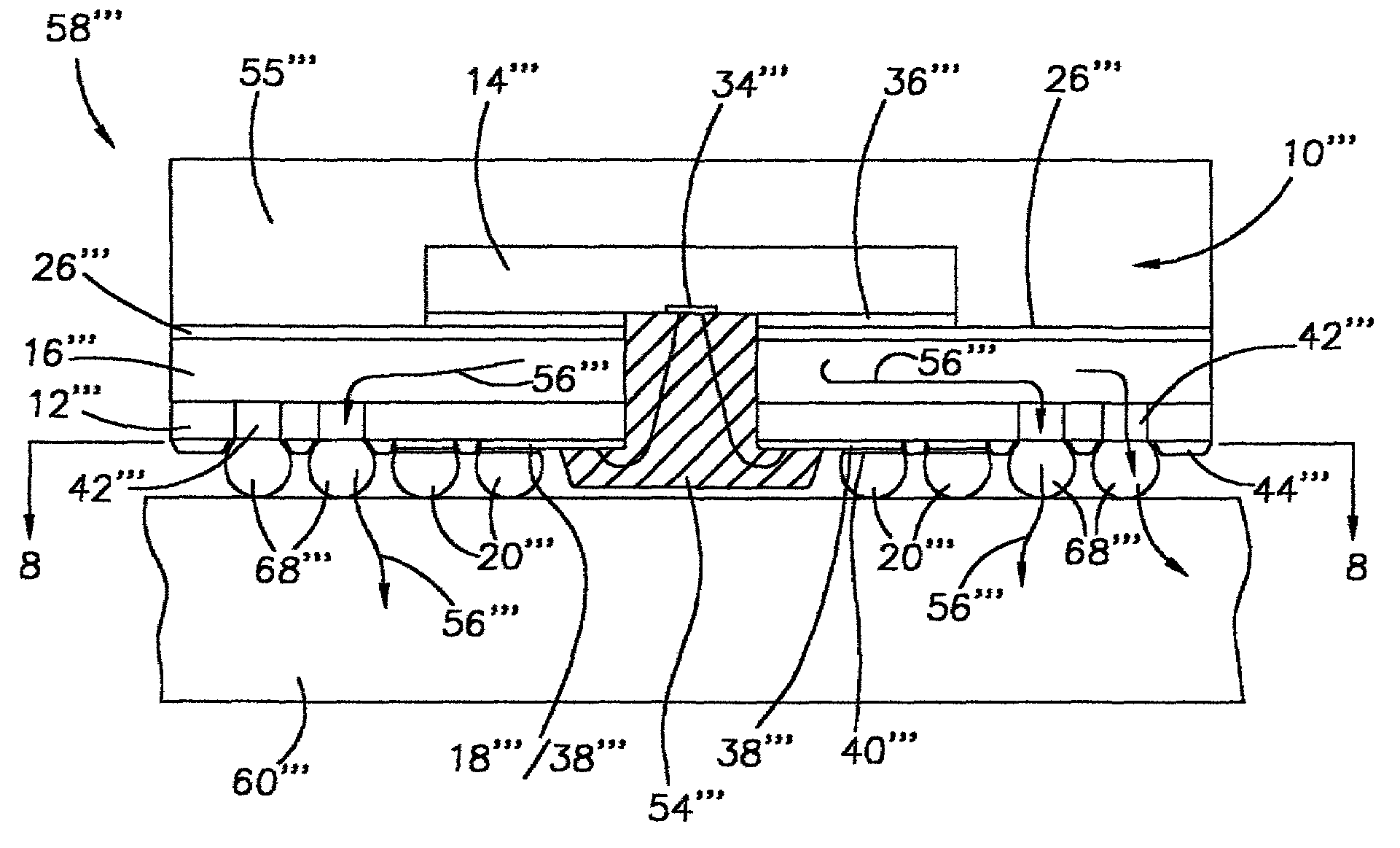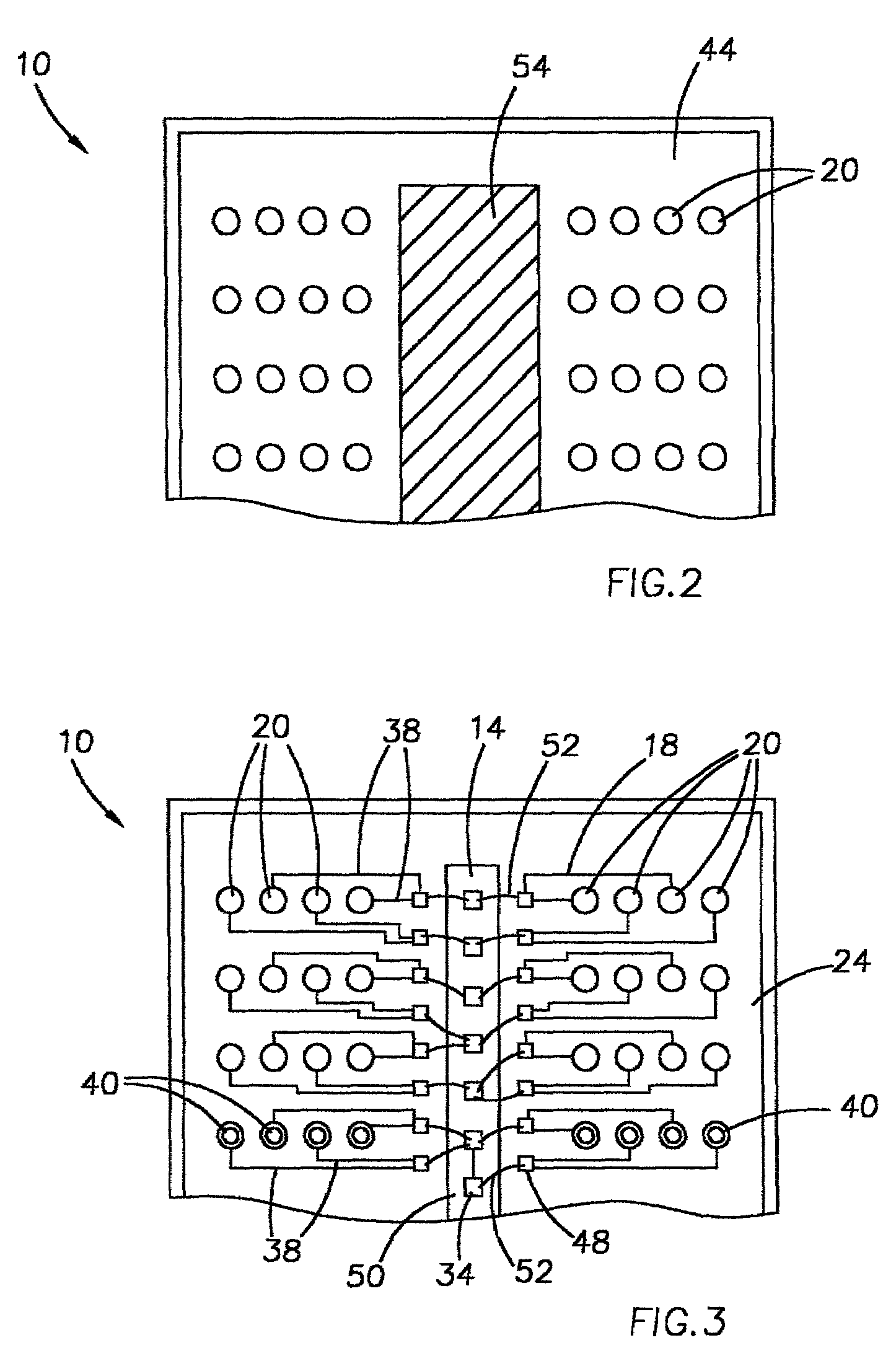Intrinsic thermal enhancement for FBGA package
a technology of bga and fbga, applied in the field of semiconductor devices, can solve the problems of reducing the surface area essential for thermal heat transfer, increasing the size and complexity of semiconductor devices, and enhancing microchip cooling, so as to achieve the effect of conducting a relatively large amount of heat away, reducing junction temperature, and increasing the thermal performance of fbga and bga packages
- Summary
- Abstract
- Description
- Claims
- Application Information
AI Technical Summary
Benefits of technology
Problems solved by technology
Method used
Image
Examples
example
Sensitivity Test Study of Substrate Construction and Heat Spreading Attachment
[0078]A sensitivity test study was conducted to determine the effects of substrate constructions and heat spreading attachments at natural and forced convection. The following substrate constructions were examined:[0079]a) A prior art semiconductor device 72 having a single metal layer construction (“single layer”), as depicted in FIG. 12. The device 72 comprised a support (core) substrate 12 made of bismaleimide triazine (BT) resin, a semiconductor die 14, a conductive (signal) plane layer 18 made of copper traces, and solder ball contacts 20.[0080]b) An embodiment of a semiconductor device according to the invention having a two metal layer construction (“2-layer”), as depicted in FIG. 1. The 2-layer device 10 had a thick copper plane layer 16, a support (core) substrate 12 made of BT resin, copper traces 18, and solder ball contacts 20.[0081]c) An embodiment of a semiconductor device according to the in...
PUM
 Login to View More
Login to View More Abstract
Description
Claims
Application Information
 Login to View More
Login to View More - R&D
- Intellectual Property
- Life Sciences
- Materials
- Tech Scout
- Unparalleled Data Quality
- Higher Quality Content
- 60% Fewer Hallucinations
Browse by: Latest US Patents, China's latest patents, Technical Efficacy Thesaurus, Application Domain, Technology Topic, Popular Technical Reports.
© 2025 PatSnap. All rights reserved.Legal|Privacy policy|Modern Slavery Act Transparency Statement|Sitemap|About US| Contact US: help@patsnap.com



